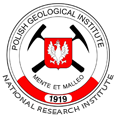In GeoShale 2014 we propose following panels:
-
Shale Basins Stratigraphy, Paleoenvironment and Paleoclimate
-
Shale Geochemistry, Diagenesis and Reservoir Properties
-
Shale Basins Geophysics and Tectonics
-
Shale Gas Exploration and Production (under the auspices of Orlen Upstream)
Invited speakers include:
- MARK HOUNSLOW
Lancaster Environment Centre, Lancaster University, United Kingdom
- PIOTR KRZYWIEC
Institute of Geological Sciences, Polish Academy of Sciences, Warsaw, Poland
- PAWEŁ LIS
GeoFutureConsulting, Warsaw, Poland
- NAZMUL HAQUE MONDOL
Department of Geosciences, University of Oslo, Norway
- NIELS H. SCHOVSBO
Geological Survey of Denmark and Greenland, Denmark
- JAN ŚRODOŃ
Institute of Geological Sciences, Polish Academy of Sciences - Research Centre in Cracow, Poland
- JAROSŁAW ZACHARSKI
ORLEN Upstream, Poland
ABOUT SESSIONS:
Shale Basins Stratigraphy, Paleoenvironment and Paleoclimate:
This session is dedicated to a wide spectrum of sedimentological and stratigraphical studies and their contribution to understanding of the mudrock depositional system from the basin scale to microscale. The recent stratigraphic approach to mudrocks focuses not only on traditional biostratigraphic and lithostratigraphic aspects but also on sequence stratigraphy, event stratigraphy, chemostratigraphy and tephrostratigraphy. Multi-stratigraphic data provide a basis for dating of shale depositional processes and evolution of sedimentary basins. Mudrocks have previously been regarded as deposits accumulated from suspension of fine-grained sediment in low-energy environments.
However, recent advances in sedimentological investigations show that these seemingly monotonous and homogenous rocks reveal discrete lithological changes reflecting fluctuations of depositional conditions. In many cases, their deposition was influenced by current activity, which is supported by numerous sedimentary structures, including current and wave ripples, hummocky cross-stratification, graded beds, water escape structures and scours.
Moreover, sedimentological studies are crucial for the recognition of mudrock facies type as well as their spatial and temporal distribution in sedimentary basins. They are supported by investigation of trace fossils and distribution of pyrite framboid diameters that are useful tools in deciphering of abiotic sedimentary features, e.g., energy, oxygenation, salinity, sedimentation rate as well as type and cohesion of substrate. Thus, combined stratigraphic and sedimentological data provide insight into tectonic, climatic and eustatic controls on the depositional dynamics of shale.
Shale Geochemistry, Diagenesis and Reservoir Properties:
Fine-grained sediments like shales may contain an abundance of organic matter, and its most important contributors are zooplankton, phytoplankton, bacteria and higher plants. Organic material in shales is the source for hydrocarbons when subjected to increasing burial, heat and pressures. That is why, just a few years ago, Polish geoscientists perceived organic-rich fine-grained sediments mainly as a seal and source rocks for oil and gas accumulation. Nowadays, shales are considered not only the source rocks or the seal, but also the reservoir rocks in the shale gas/shale oil petroleum systems. Thus, methods of organic and inorganic geochemistry are widely applied to decipher hydrocarbon properties and paleoredox condition of fine-grained sediments.
Organic geochemistry plays an important role, especially when it comes to explanation of the hydrocarbon generation and retention processes within the shales. Geochemical parameters may answer the question why one shale interval is productive and why the other is not. Organic carbon content, referred to as TOC, and organic matter thermal maturation are the only two basic pieces of the puzzle to predict the productivity potential of shales. These two might also be the first indicators of proper location for the shale gas/shale oil exploration in the regional scale.
Inorganic geochemisty provides good proxies to reconstruct redox condition in the sedimentary basin. Some redox-sensitive trace metals (V, Ni, U, Cr, Co) are useful tools used to constrain benthic oceanic redox conditions since they can co-precipitate with organic matter or metal sulphides under anoxic conditions. Moreover, useful geochemical parameters providing basic information about oxygenation of paleoenvironment include S and Mo isotopic signatures. Molybdenum isotopes have appeared as a new tool in paleoredox investigation because the δ98Mo seawater value varies with the relative magnitude of the oxic, suboxic and anoxic (euxinic) depositional sinks in the world ocean.
Shale Basins Geophysics and Tectonics:
Each basin is unique and should be separately investigated by a set of different methods. Among the most important are geophysical methods which are essential to understand the geology of sedimentary basins, including shale formations. Until the advent of “unconventional hydrocarbons boom”, shale had not been the main target in geophysical analyses. Because of that, the geophysical methods and knowledge applied to shale rocks are still in its development phase.
The varying properties of shales require applying sophisticated geophysical methods by the geoscientist for better understanding of the heterogeneity of shale reservoirs to maximize production. The conference provides the possibility to exchange information about recent advances in geophysical methods applied to shale plays, such as seismic, micro-seismic, magnetic, gravimetric, well logging measurements and others.
The role of structural geology is crucial in basin analysis. Dealing with shale reservoirs requires characterization of fractures and stress on a daily basis. Correctanalysis of recent and paleostress regimes allows planning successfully a horizontal well path and hydraulic fracturing. The understanding of rock deformation processes and timing of formation of structures helps better planning of exploration strategies. The GeoShale 2014 conference is a great event to share scientific knowledge and case studies about the tectonics of shales in all ranges, from basin scale through outcrop to thin section scale.
Shale Gas Exploration and Production (under the auspices of Orlen Upstream):
The GeoShale 2014 conference is good opportunity to exchange experiences in the shale gas exploration and production (E&P). Currently, economical shale gas production is carried out in the United States and Canada. Outside the United States, the most intense exploration works are carried out in European countries like Poland, Ukraine and Great Britain. A purpose of exploration works in Europe is the characterization of prospective shale formations and the assessment of their gas potential.
The informal term “unconventional gas” (like shale gas) refers to the method of extraction used for natural gas. The process of shale gas exploration and production
is long and complex. Gas from unconventional gas fields is more difficult to extract, compared with gas from conventional gas traps, therefore properly made exploration works decide about future economical production. The stages of prospecting include designation of the most prospective shale gas areas called “sweet spot”, based at first on the number of archived geological and geophysical data. Then, seismic research and drill core analysis are performed. The next stage is building a geological model, which is necessary to designate sweet spot areas and to select the drilling location. Drilling is the most important stage of exploration operations, because we can or cannot observe gas
shows in the well. Furthermore, we obtain very important data like drill cores and well logs. If the result of drilling is positive, we can proceed to the production stage. Shale gas production is preceded by the drilling of horizontal section of well and then hydraulic fracturing is performed. Systematic observation of shale gas production from well in the first few months is the basis for the assessment of potential gas production.
Designation of the sweet spot and the use of appropriate fracturing technology is a challenge for countries outside the United States, which are thinking
about economical shale gas production. For the shale gas exploration and production industry, it is a great challenge, because each shale is different and the
approach to exploration and production must be specific.















